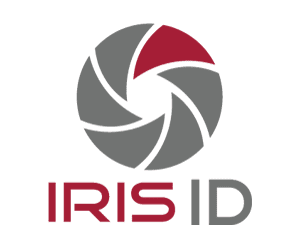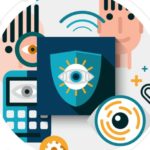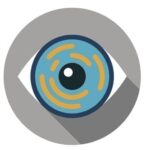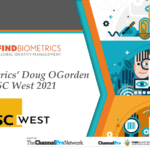Iris ID is a leading provider of iris recognition technology, and as a result has racked up a number of partners over the years – from Honeywell to GenKey to Integrated Biometrics. Indeed, that last partnership led to the announcement of a multimodal handheld device supporting both iris and fingerprint scanning earlier this year. Nevertheless, for an iris recognition specialist, it’s the contactless authentication supported by this particular modality that helps to make it special.
Now, with the COVID-19 pandemic pushing everyone to reduce physical contact with each other and common surfaces, this contactless technology is more important than ever – and this is the running theme in a new interview between FindBiometrics President Peter O’Neill and Iris ID’s Mohammed Murad, Vice President of Global Sales and Business Development. Beyond the benefits iris biometrics offers in fighting COVID-19, Murad also delves into other advantages in industrial and healthcare deployments, eliminating buddy-punching, and protecting the privacy of end users. Read more to hear from the head of a leading provider of contactless providers at a time of intense physical distancing.
Read the full interview with Mohammed Murad, Vice President of Global Sales and Business Development, Iris ID:
Peter O’Neill, President, FindBiometrics: How can non-contact biometric security promote hygiene in physical security scenarios?
Mohammed Murad, Vice President of Global Sales and Business Development, Iris ID: We’ve learned during this COVID-19 crisis that the virus can be spread through contact with almost any surface. The virus can survive up to three days on stainless steel and plastic. That’s why it’s so important organizations offer a hygienic, non-contact identity authentication solution to reduce the chance of spreading the disease now and in the future. This led to a recent ABI research study that predicted we’ll see a greater demand for non-contact biometrics.
FB: How do you expect the COVID-19 crisis to affect the attitudes of end users when it comes to biometrics and other types of security?
Iris ID: We expect to see a major market change as end users shift from a reliance on contact biometrics to solutions based on iris and facial recognition for all identity authentication situations. End users want a frictionless authentication experience and iris biometrics provides that with accuracy and speed. It will be a while, if ever, before people accept touching surfaces that may be contaminated. Cleaning a device after each use is not a very practical or efficient solution. Iris biometrics can identify an individual from a distance without compromising accuracy, speed or a person’s well-being.
FB: Beyond opening locked doors, what are other applications for non-contact biometrics?
Iris ID: We are living in a society where so many events and transactions require rapid and accurate identity authentication. Iris ID provides identity authentication solutions in access control, workforce management (time attendance), national and civil ID programs and many other business and social services programs. As we move beyond the COVID-19 crisis, we will see a greater need for non-contact biometric solutions in the financial sector; healthcare; enterprise security/identity; law enforcement and government; and immigration, border crossing and national ID programs.
FB: What are the other major benefits of using non-contact biometrics, outside the realm of staying healthy?
Iris ID: We have many occupations requiring people to routinely wear personal protective equipment – goggles, masks, gloves and gowns – for not only health, but also for safety and regulatory reasons. Contactless iris recognition technology isn’t affected by any of this equipment. There is also a growing demand for contactless biometrics in time and attendance solutions. An iris-based system is fast, accurate and convenient while eliminating costly payroll fraud such as buddy punching. Iris ID technology accommodates hundreds of current time and attendance applications as well as new apps to be developed by major solution providers and software developers. The solution integrates with an organization’s software to process payroll and help calculate other benefits such as health, disability and vacation.
FB: We recently put a very strong focus on biometrics in healthcare. What are the benefits of non-contact biometrics for healthcare professionals like doctors, nurses, and lab workers?
Iris ID: Non-contact biometrics enable healthcare professionals to wear their personal protective equipment as they engage identity authentication points. They will also appreciate the ability of the technology to accurately identify patients to ensure they are receiving the treatments and pharmaceuticals prescribed specifically for them. Contactless biometric readers used for access control keep unauthorized people out of labs, pharmacies, surgical suites, quarantined areas and more. Insurance and prescription fraud are reduced and patient privacy is enhanced to maintain protocol defined by HIPAA (Healthcare Insurance Portability and Accountability Act) and other regulatory laws. See our white paper, Biometrics and the Three Elements of Healthcare, for more information on how biometrics are being used within the healthcare industry.
FB: Because of public confusion between authentication and identification for surveillance, some contactless biometric technologies have a privacy stigma associated with them. How can non-contact biometric authentication enhance and protect user privacy?
Iris ID: Biometrics are the measurement of physical characteristics, something only the owner can possess. They can’t be lent or stolen like plastic access control cards. Only authorized persons can login to a computer network, complete a financial transaction or gain healthcare services. This protects a person’s identity and privacy. Also, iris-based technology is an opt-in solution. There is no doubt that a person knows they are being enrolled, unlike other biometric systems.









Follow Us